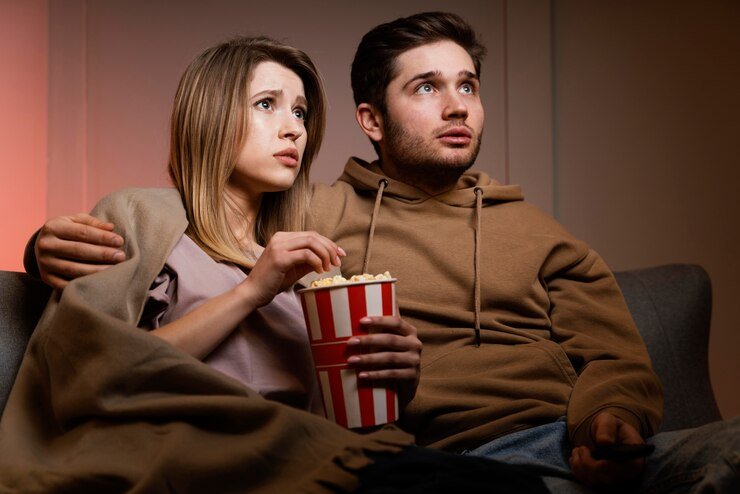Have you ever watched a movie that lingers on characters sitting in dimly lit rooms, staring into nothingness, seemingly weighed down by an invisible burden? If that cinematic elusiveness resonates with you, you’re likely an ennuifan—someone captivated by the art of Ennui cinema. Ennui movies invite viewers into a world of existential reflection, sometimes frustratingly slow but always thought-provoking ennuifans.
This post is your guide into the fascinating yet understated world of the Ennui film genre. We’ll explore its origins, defining characteristics, emotional impact, and its broader influence on modern cinema. Whether you’re a seasoned film lover or someone new to this beautifully melancholic genre, we’ll also share a list of must-watch Ennui films to get started.
Stay with us—this deep exploration is anything but dull.
What is Ennui Cinema?
Rooted in the French word “ennui,” meaning a profound, often existential boredom, the Ennui film genre captures a uniquely universal yet somber aspect of the human condition. Emerging from the post-World War II era, particularly within the European art-house movement, Ennui cinema serves as a lens into life’s quieter, lonelier moments.
Filmmakers like Michelangelo Antonioni and Federico Fellini pioneered this genre by portraying protagonists who seemingly had everything—wealth, love, prestige—yet were inexplicably dissatisfied or disillusioned. Over time, this cinematic mood extended beyond European filmmaking and became a global phenomenon, influencing directors like Sofia Coppola and Wong Kar-wai to weave similar tones into their narratives.
By capturing life’s languid, lesser-seen moments, Ennui films persist as a genre that’s as much about observation as it is about storytelling.
What Defines Ennui Cinema?
At the heart of Ennui films is an unhurried dissection of existential dread, often expressed through the subtle experiences of its characters. But what specifically defines this genre? Here are some key characteristics that make a movie distinctly “Ennui”:
1. Slow-Burn Narratives
Ennui movies thrive on minimal plots. Rather than fast-paced developments or twists, these films focus on the slow, deliberate unfolding of a character’s psyche. Examples like Lost in Translation (2003) and The Green Ray (1986) present viewers with lingering moments of inaction and contemplation, which compel audiences to sit with the characters in their quiet frustrations.
2. Minimal Dialogues
Another hallmark of Ennui cinema is restraint in dialogue. Conversations are sparse, often incoherent, and leave much unsaid, allowing silences to speak louder. Director Yasujirō Ozu’s Tokyo Story (1953) demonstrates this beautifully, crafting emotionally charged silence between family members confronting generational estrangement.
3. Introspective Characters
Ennui films often feature characters struggling with aimlessness or dissatisfaction. The protagonists are far from heroic or ambitious; instead, they’re deeply flawed, preoccupied with questions of purpose. Consider Anna in L’Avventura (1960), who is surrounded by beauty and affluence yet spirals into emotional detachment.
4. Dreamy, Atmospheric Cinematography
Cinematography plays an instrumental role in creating an Ennui film’s tone. Long, lingering shots of empty streets, overcast skies, or wistful stares create a mood of poignant detachment. Wong Kar-wai’s In the Mood for Love (2000) envelops viewers in vibrant sepia tones contrasting with the emptiness of its protagonists’ inner lives.
5. Themes of Isolation and Disconnection
Above it all, Ennui cinema captures humanity’s ongoing battle with isolation and disconnection. Films like Her (2013) and Eternal Sunshine of the Spotless Mind (2004) place these themes front and center, making unmistakable connections with audiences navigating life’s quieter crises ennuifans.
By cohesively blending these elements, Ennui cinema turns mundanity into poetic art.
Why Does Ennui Cinema Leave Such an Emotional Impact?
For many viewers, an Ennui film isn’t just something to watch—it’s something to feel.
Ennui films don’t rely on action or resolution for their emotional resonance. Instead, they invite deep reflection by mimicking the patterns of real-life melancholy. The slow pace of these movies fosters mindfulness, pressing viewers to confront a discomforting truth—there is no tidy resolution to existential malaise.
But therein lies the catharsis. Viewers often connect profoundly with characters’ dissatisfaction, realizing they’re not alone in grappling with life’s ambiguity. That emotional clarity can leave a lasting impression long after the credits roll, provoking thoughts on life, love, and the human condition.
Ennui Cinema and Its Influence on Modern Films
The influence of Ennui cinema reaches far beyond its roots in European art-house productions. Its themes and aesthetics have seeped into modern filmmaking, shaping various genres and narratives.
Filmmakers like Noah Baumbach and Greta Gerwig reflect Ennui characteristics in their movies, from the subtle detachment in Frances Ha (2012) to the bittersweet tone of Lady Bird (2017). Meanwhile, the integration of dreamy cinematography and introspection—the bedrock of Ennui cinema—is evident in critically acclaimed films like Moonlight (2016).
Ennui’s impact isn’t confined to independent or arthouse films, either. Mainstream cinema has also borrowed from the genre, with films like Her—a high-tech romantic drama—adopting its nuanced weariness.
These influences suggest that Ennui films will not only endure but continue to inspire a broader spectrum of storytelling for years to come.
Must-Watch Ennui Films for Beginners and Devoted Ennuifans
If you’re curious to explore Ennui cinema or further your love for it, here’s a list of must-watch films catering to every level of interest.
For Beginners:
- Lost in Translation (2003), directed by Sofia Coppola
- Tokyo Story (1953), directed by Yasujirō Ozu
- Eternal Sunshine of the Spotless Mind (2004), directed by Michel Gondry
For Devoted Ennuifans:
- L’Avventura (1960), directed by Michelangelo Antonioni
- Jeanne Dielman, 23 quai du Commerce, 1080 Bruxelles (1975), directed by Chantal Akerman
- The Green Ray (1986), directed by Éric Rohmer
- Chungking Express (1994), directed by Wong Kar-wai
Whether you’re just starting, or you’ve long admired the genre, these films guarantee a deeply introspective experience ennuifans.
The Enduring Appeal of Ennui Cinema
What makes Ennui cinema so compelling is its ability to capture the quiet undercurrents of existence—those tender, unspoken emotions we all feel but rarely articulate. By placing viewers within these moments of stillness and reflection, Ennui films allow us to see ourselves more clearly.
